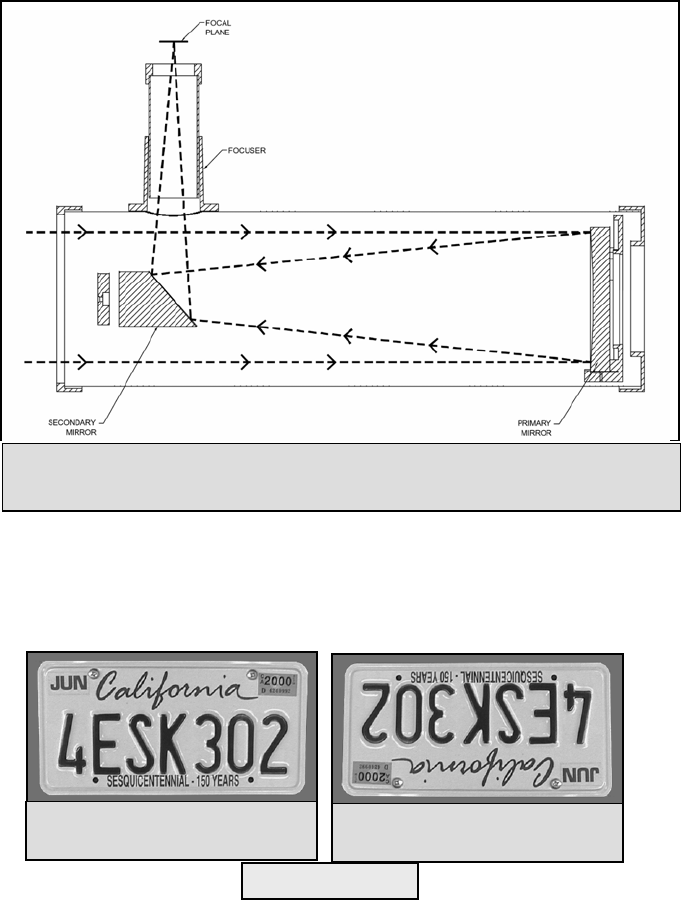
focal lengths up to 1000mm and still enjoy a telescope that is relatively compact and portable. A Newtonian Reflector
telescope offers such impressive light-gathering characteristics you can take a serious interest in deep space astronomy
even on a modest budget. Newtonian Reflector telescopes do require more care and maintenance because the primary
mirror is exposed to air and dust. However, this small drawback does not hamper this type of telescope’s popularity
with those who want an economical telescope that can still resolve faint, distant objects.
Figure 5
A cutaway view of the light path of the Newtonian optical design
I
I
m
m
a
a
g
g
e
e
O
O
r
r
i
i
e
e
n
n
t
t
a
a
t
t
i
i
o
o
n
n
Newtonian reflectors produce a right-side-up image but the image will appear rotated based on the location of the
eyepiece holder in relation to the ground. Newtonian reflectors are best for astronomical use where right-side-up does
not matter.
Actual image orientation as seen
with the unaided eye
Upside-down image, as viewed
though a Newtonian telescope
Fi
ure 6
F
F
o
o
c
c
u
u
s
s
i
i
n
n
g
g
To focus your telescope, simply turn the focus knob located directly below the eyepiece holder. Turning the knob
clockwise allows you to focus on an object that is farther than the one you are currently observing. Turning the knob
counterclockwise from you allows you to focus on an object closer than the one you are currently observing.
•If you wear corrective lenses (specifically glasses), you may want to remove them when observing with an eyepiece
attached to the telescope. However, when using a camera you should always wear corrective lenses to ensure the
sharpest possible focus. If you have astigmatism, corrective lenses must be worn at all times.
7
